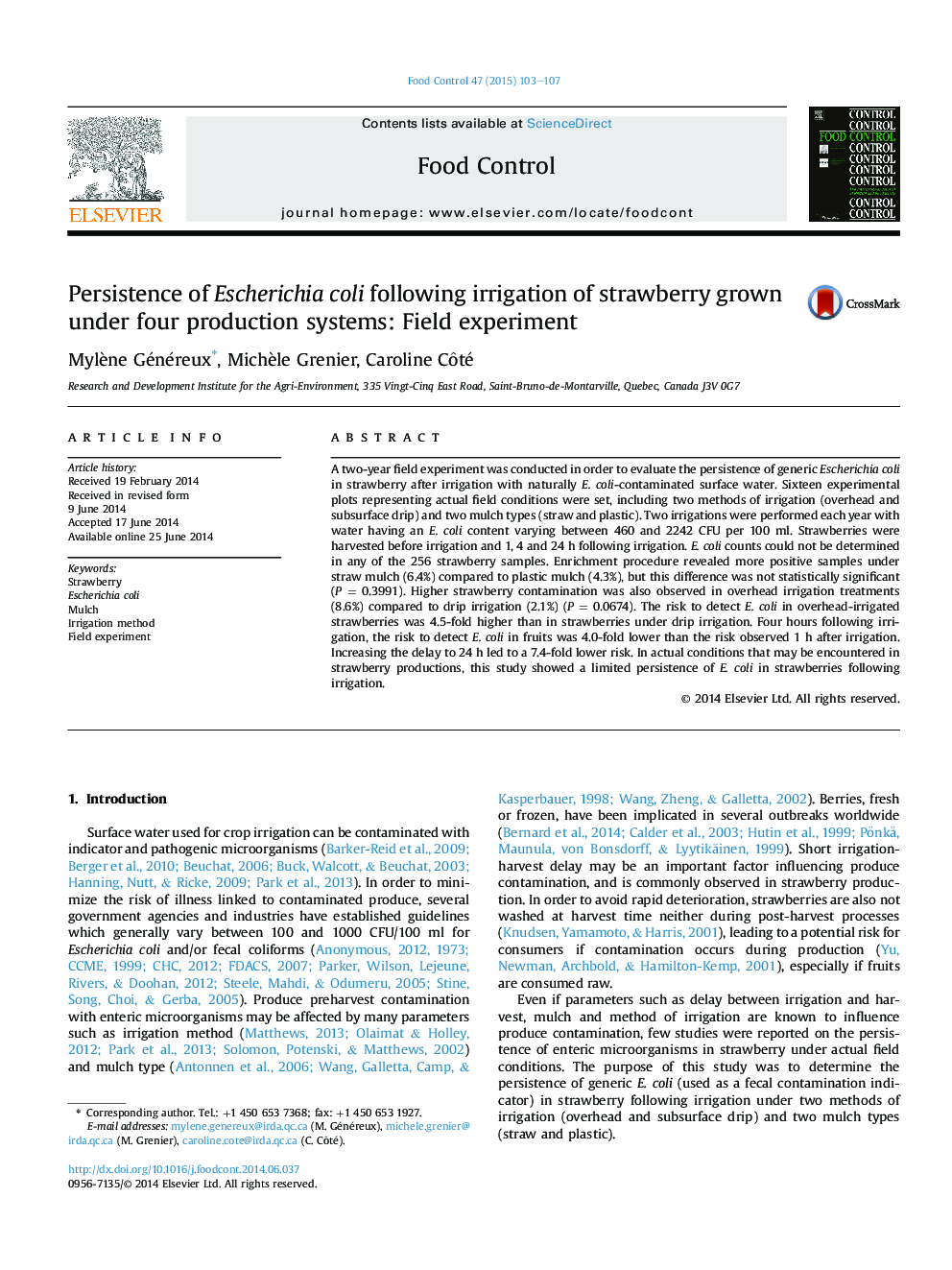| کد مقاله | کد نشریه | سال انتشار | مقاله انگلیسی | نسخه تمام متن |
|---|---|---|---|---|
| 6391333 | 1628415 | 2015 | 5 صفحه PDF | دانلود رایگان |
- Strawberry experimental plots were irrigated with contaminated surface water.
- Escherichia coli could only be recovered in strawberries with an enrichment procedure.
- Higher E. coli presence was observed under straw mulch and spray irrigation.
- Strawberry contamination was not linked to E. coli content in water.
A two-year field experiment was conducted in order to evaluate the persistence of generic Escherichia coli in strawberry after irrigation with naturally E. coli-contaminated surface water. Sixteen experimental plots representing actual field conditions were set, including two methods of irrigation (overhead and subsurface drip) and two mulch types (straw and plastic). Two irrigations were performed each year with water having an E. coli content varying between 460 and 2242 CFU per 100 ml. Strawberries were harvested before irrigation and 1, 4 and 24 h following irrigation. E. coli counts could not be determined in any of the 256 strawberry samples. Enrichment procedure revealed more positive samples under straw mulch (6.4%) compared to plastic mulch (4.3%), but this difference was not statistically significant (P = 0.3991). Higher strawberry contamination was also observed in overhead irrigation treatments (8.6%) compared to drip irrigation (2.1%) (P = 0.0674). The risk to detect E. coli in overhead-irrigated strawberries was 4.5-fold higher than in strawberries under drip irrigation. Four hours following irrigation, the risk to detect E. coli in fruits was 4.0-fold lower than the risk observed 1 h after irrigation. Increasing the delay to 24 h led to a 7.4-fold lower risk. In actual conditions that may be encountered in strawberry productions, this study showed a limited persistence of E. coli in strawberries following irrigation.
Journal: Food Control - Volume 47, January 2015, Pages 103-107
